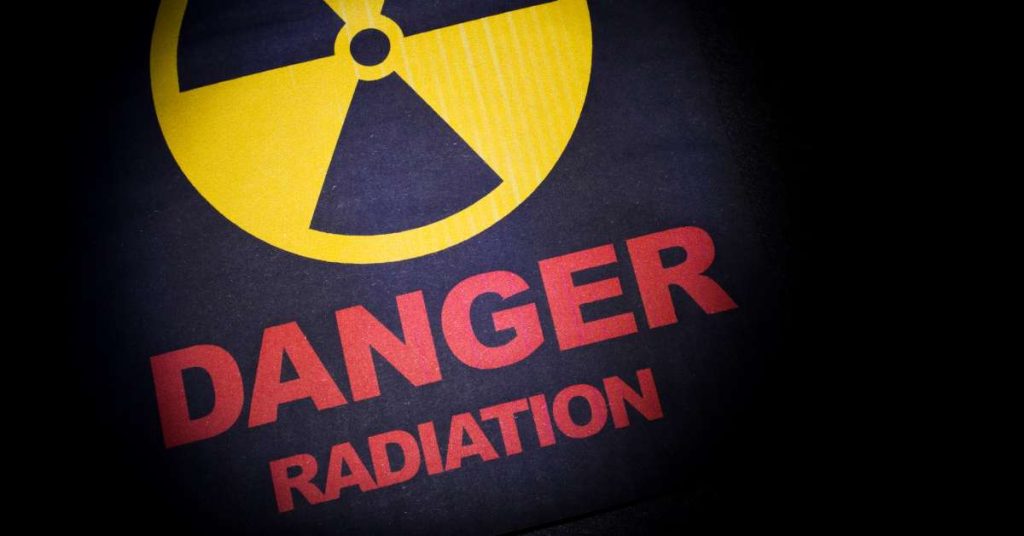
Facing the immediate aftermath of a nuclear bomb is a profoundly challenging experience. One of the paramount concerns for those taking refuge in shelters is when it is safe to go outside after a nuclear bomb. They anxiously await the moment they can step out and commence the recovery process.
Wait for Radiation Levels to Drop
It is crucial to wait until radiation levels, as measured by detectors, have dropped to safe levels according to authorities' guidance before going outside after a nuclear bomb. While the intense initial burst of radiation dissipates rapidly, the fallout poses severe risks for days after. It is essential to learn how to interpret radiation readings, shelter safely, and protect your health once the fallout settles.
Understanding Radiation Risks After a Nuclear Detonation
Before going outside after a nuclear explosion, it is important to understand the radiation risks involved. The initial blast causes intense radiation, but the particles in the fallout can spread far and wide. Learning how far the fallout travels, the duration of the threat, and how to detect radiation levels are crucial steps to ensure safety.
How Far Can Nuclear Fallout Spread After an Explosion?
The distance nuclear fallout spreads depends on factors such as the size of the explosion, wind patterns, and weather conditions. In the case of a 1 megaton surface blast, dangerous levels of radiation in the fallout zone can extend over 200 miles downwind. Strong winds can carry radiation even farther, and rain can bring fallout to the ground more quickly.
Fallout dissipates exponentially over time and distance. Dangerous radiation levels may persist for up to 2 weeks within 10-20 miles of the blast. Additionally, trace amounts of radiation can circulate the globe. It is important to stay tuned to authorities for fallout zone maps and updates.
Short and Long Term Dangers of Nuclear Radiation Exposure
In the short term, radiation exposure can cause radiation sickness, skin burns, and acute cellular damage if you lack shelter from heavy fallout. Without treatment, moderate exposure can be fatal.
Long-term risks include cancer and genetic effects, especially from inhaling or ingesting radioactive particles. Iodine-131, for example, collects in the thyroid gland, increasing the likelihood of thyroid cancer for years to come. Young children and the unborn are particularly vulnerable to these risks.
Exposure to radiation is measured in rem. Doses over 100 rem can cause radiation sickness, while doses over 500 rem can be fatal without treatment. The risk of developing cancer starts increasing above 25 rem over a lifetime.

Using Geiger Counters and Dosimeters to Measure Radiation Levels
Having a battery-powered Geiger counter and dosimeters on hand to measure radiation levels is vital before going outside after a nuclear detonation. Geiger counters detect current radiation levels in the environment, and it is more useful to look for counts per minute (CPM) instead of counts per second. Dosimeters, on the other hand, measure cumulative exposure over time and are usually indicated in rem.
Readings should be compared to hazard guidelines. Below 10 CPM is considered safe, while up to 100 CPM is concerning but survivable with precautions. It is recommended to take multiple measurements from different devices and locations. It is important to rely on official guidance rather than solely relying on personal equipment.
Waiting Until Radiation Drops to Safer Levels
To determine if it is safe to go outside after a nuclear bomb blast, it is necessary to wait for days or weeks for the radiation emitted by the fallout to dissipate to safe levels outside the shelter. This should be measured using reliable detection equipment and guidance. Rushing outside too soon puts one's life in mortal danger.
Understanding Increased Cancer Risks from Radiation
Long-term exposure to radiation can lead to an increased risk of cancer. Types of cancer linked to radiation exposure include thyroid, lung, stomach, breast, and many others. It is essential to understand these risks for long-term health management.
The increased risk of cancer depends on the dose and duration of radiation exposure, among many other factors. Younger individuals are more susceptible to the effects of radiation due to their bodies still growing and developing. Frequent medical check-ups can help track one's health status and enable the early detection of any potential problems.
—————————————————————————————————————————————————————————————–
By: thepreppingguide
Title: When is it Safe to Go Outside After a Nuclear Bomb?
Sourced From: thepreppingguide.com/when-is-it-safe-to-go-outside-after-a-nuclear-bomb/
Published Date: Wed, 27 Sep 2023 06:42:39 +0000

